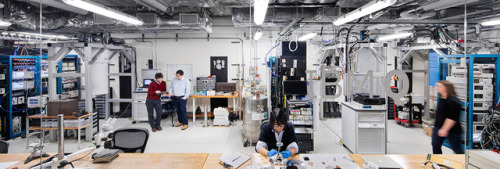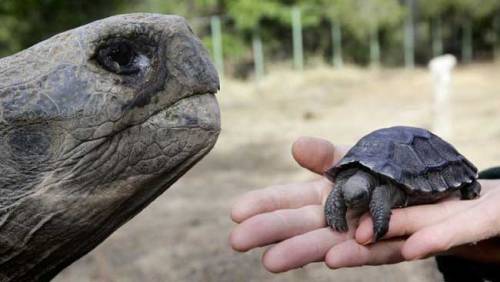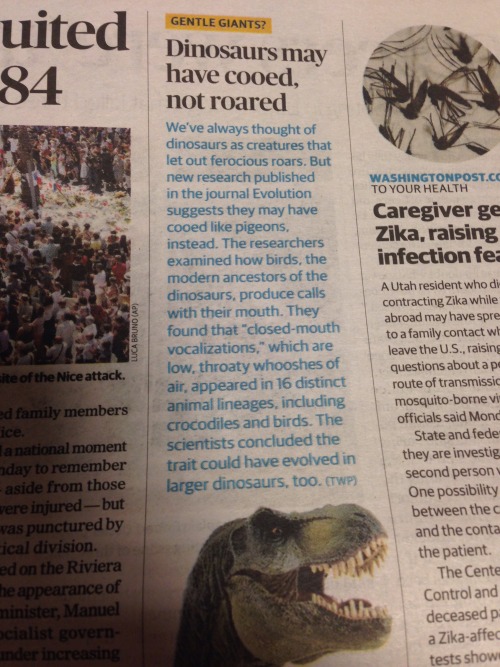Babies Don’t Just Look Cute, Scientists Find

Babies don’t just look cute, scientists find
What is it about the sight of an infant that makes almost everyone crack a smile? Big eyes, chubby cheeks, and a button nose? An infectious laugh, soft skin, and a captivating smell? While we have long known that babies look cute, Oxford University researchers have found that cuteness is designed to appeal to all our senses.
They explain that all these characteristics contribute to ‘cuteness’ and trigger our caregiving behaviours, which is vital because infants need our constant attention to survive and thrive. The study is published in the journal Trends in Cognitive Sciences.
Morten Kringelbach, who together with Eloise Stark, Catherine Alexander, Professor Marc Bornstein and Professor Alan Stein, led the work in the Department of Psychiatry at the University of Oxford, said: ‘Infants attract us through all our senses, which helps make cuteness one of the most basic and powerful forces shaping our behaviour.’
Reviewing the emerging literature on how cute infants and animals affect the brain, the Oxford University team found that cuteness supports key parental capacities by igniting fast privileged neural activity followed by slower processing in large brain networks also involved in play, empathy, and perhaps even higher-order moral emotions.
The data shows that definitions of cuteness should not be limited just to visual features but include positive infant sounds and smells. From an evolutionary standpoint, cuteness is a very potent protective mechanism that ensures survival for otherwise completely dependent infants.
Professor Kringelbach said: ‘This is the first evidence of its kind to show that cuteness helps infants to survive by eliciting caregiving, which cannot be reduced to simple, instinctual behaviours. Instead, caregiving involves a complex choreography of slow, careful, deliberate, and long-lasting prosocial behaviours, which ignite fundamental brain pleasure systems that are also engaged when eating food or listening to music, and always involve pleasant experiences.’
The study shows that cuteness affects both men and women, even those without children.
‘This might be a fundamental response present in everyone, regardless of parental status or gender, and we are currently conducting the first long-term study of what happens to brain responses when we become parents.’ said Kringelbach.
More Posts from Science-is-magical and Others




Quantum computers have arrived.
First there was the mainframe, then came the personal computer, now we’ve reached a new monumental landmark in the history of technology. For the first time ever, IBM aims to bring universal quantum computers out of the lab and into the commercial realm. Projected to sift through vast possibilities and data, to choose the perfect option or discover unseen patterns, quantum computing is poised to drive a new era of innovation across industries. This means that some of the world’s most complex problems now have a chance of being solved. And as the quantum eco-system grows, a seemingly impossible kind of physics could start to make the most incredible things possible.
Learn More →

Mars in the Loop : This composite of images spaced some 5 to 9 days apart, from late April (bottom right) through November 5 (top left), traces the retrograde motion of ruddy-colored Mars through planet Earth’s night sky. To connect the dots and dates in this 2018 Mars retrograde loop, just slide your cursor over the picture (and check out this animation). But Mars didn’t actually reverse the direction of its orbit. Instead, the apparent backwards motion with respect to the background stars is a reflection of the motion of the Earth itself. Retrograde motion can be seen each time Earth overtakes and laps planets orbiting farther from the Sun, the Earth moving more rapidly through its own relatively close-in orbit. On July 27, Mars was near its favorable 2018 parihelic opposition, when Mars was closest to the Sun in its orbit while also opposite the Sun in Earth’s sky. For that date, the frame used in this composite was taken during the total lunar eclipse. via NASA
Blowing Bubbles in the Gamma-ray Sky

Did you know our Milky Way galaxy is blowing bubbles? Two of them, each 25,000 light-years tall! They extend above and below the disk of the galaxy, like the two halves of an hourglass. We can’t see them with our own eyes because they’re only apparent in gamma-ray light, the highest-energy light in the universe.

We didn’t even know these humongous structures were smack in the middle of our galaxy until 2010. Scientists found them when they analyzed the first two years of data from NASA’s Fermi Gamma-ray Space Telescope. They dubbed them the “Fermi bubbles” and found that in addition to being really big and spread out, they seem to have well-defined edges. The bubbles’ shape and the light they give off led scientists to think they were created by a rapid release of energy. But by what? And when?

One possible explanation is that they could be leftovers from the last big meal eaten by the supermassive black hole at the center of our galaxy. This monster is more than 4 million times the mass of our own Sun. Scientists think it may have slurped up a big cloud of hydrogen between 6 and 9 million years ago and then burped jets of hot gas that we see in gamma rays and X-rays.

Another possible explanation is that the bubbles could be the remains of star formation. There are massive clusters of stars at very the center of the Milky Way — sometimes the stars are so closely packed they’re a million times more dense than in the outer suburb of the galaxy where we live. If there was a burst of star formation in this area a few million years ago, it could have created the surge of gas needed to in turn create the Fermi bubbles.

It took us until 2010 to see these Fermi bubbles because the sky is filled with a fog of other gamma rays that can obscure our view. This fog is created when particles moving near light speed bump into gas, dust, and light in the Milky Way. These collisions produce gamma rays, and scientists had to factor out the fog to unveil the bubbles.

Scientists continue to study the possible causes of these massive bubbles using the 10 years of data Fermi has collected so far. Fermi has also made many other exciting discoveries — like the the collision of superdense neutron stars and the nature of space-time. Learn more about Fermi and how we’ve been celebrating its first decade in space.
Make sure to follow us on Tumblr for your regular dose of space: http://nasa.tumblr.com
Uhmm, how exactly were all of those megafauna able to grow that large and function??? And how the fuck was that giant bird actually able to fly????????
Realistic answer? Mostly because humans hadn’t come around and hunted them all to extinction yet. Dinosaurs are exempt from this because they vastly predated us, but almost anything that coincided with our timeline, we killed.
We are, for our relatively small size and frail, sometimes clumsy physical characteristics, a TERRIFYING species.
Evolution has produced all kinds of Big Shit. Ever seen a Paraceratherium?


Or a size chart for Sauropods that wasn’t produced before 1970?


Evolution likes to make things big. It tries this all the time. Whenever there’s a plentiful food source and enough space, things just get bigger and bigger.
The largest animal to have ever lived is alive right now. It’s the blue whale. And it’s truly a masterpiece of evolution’s drive to Go Bigger.



HOW THIS HAPPEN.
Basically, because they live in the ocean, space isn’t really an issue for them, and thanks to buoyancy, neither is their frankly ALARMING weight. The only real limit to their size is chemistry – whether they can possibly metabolize enough energy fast enough to stay alive at their size. Blue whales are estimated (having, for obvious reasons, never been measured in one piece) to be able to reach over 200 tons. As an average weight. Fluctuating with their feeding season. This was for a 98 foot long whale. The longest whales ever measured were 110 feet and 109 feet, both females. (Males tend to be slightly shorter, but heavier at any given length).
A blue whale can hold over 90 tons of food and water in its mouth.
They need 1.5 million kilocalories of food per day.
Blue whales are MASSIVE.
They are not the LONGEST animal in the world, though, just the heaviest. The longest is likely one of two things: the Lions Mane Jellyfish or the Bootlace Worm. The longest recorded Lions Mane Jellyfish washed up on shore with tentacles measuring 120 feet. It is unknown if they can be longer than this, but certainly possible given how fragile they are and the fact that this is just one that happened to get washed up on a beach.
The longest recorded bootlace worm SMASHES this record, but because of its stretchy body and the date of the recording (1864), the scientific accuracy is disputed. It also washed up on shore and measured 180 feet.
How far off topic am I this time?
Anyway yes animals get big sometimes. It helps deter predators when you’re too big to be hunted by anything. The only natural predator of the blue whale is killer whales. Regarding bears specifically, Brown Bears are in far more trouble than Black Bears because the Brown Bear line trends toward going bigger, which makes them easier targets for humans, while Black Bears have evolved to be shy and stealthy and avoid human contact. As a result, Brown bears are far larger, but far more likely to be driven to extinction by humans. Nature functions just fine if it’s left alone. We just ruin everything we touch. That’s why the largest individual crocodiles still living right now are the ones that have learned to avoid humans at all costs: conservation laws have not protected crocodiles from poaching long enough for them to get really, really big, even though we have significant historical records of crocodiles larger than what we generally see now. At least some of those records are considered to be reliable and put a couple extant crocodile species well over 20 feet – some over 22. The largest reliably measured crocodile was Lolong, a Saltwater crocodile in the Philippines who measured 20 feet 3 inches and died a few years ago.
And Argentavis magnificens was able to fly because it was designed to. Even with a massive 24 foot wingspan, it only weighed around 175 pounds, because birds have very lightweight skeletons. As impressive as the size was,

a living bird of that size probably weighed about as much, if not a bit less, than the man standing next to it. The surface area of its wings would have been sufficient to keep it in the air, mostly by gliding the way you see large modern birds of prey do. It would have resembled a condor or vulture, just much larger.




It’s way too late for this, but it’s important to note that NASA didn’t discover the new earth-like planets. It was a group of astronomers lead by a dude name Michaël Gillon from the University of Liège in Belgium. Giving NASA credit for this gives the United States credit for something they didn’t do, and we already have a problem with making things about ourselves so. just like…be mindful. I’d be pissed if I discovered a small solar system and credit was wrongfully given to someone else.
Good news today: the fastest horizontal flyer in the animal kingdom is now a bat.
Free-tailed bats have now been clocked flying horizontally at over 160 kilometers per hour (that’s nearly 100 mph!), toppling the previous record-holder, the swift. The record for speed of diving is still held by the peregrine falcon but we’re coming for you next, feathers.
Source

A Powerful Solar Flare : It was one of the most powerful solar flares in recorded history. Occurring in 2003 and seen across the electromagnetic spectrum, the Sun briefly became over 100 times brighter in X-rays than normal. The day after this tremendous X 17 solar flare – and subsequent Coronal Mass Ejection (CME) – energetic particles emitted from the explosions struck the Earth, creating auroras and affecting satellites. The spacecraft that took these frames – SOHO – was put in a turtle-like safe mode to avoid further damage from this and subsequent solar particle storms. The featured time-lapse movie condenses into 10 seconds events that occurred over 4 hours. The CME, visible around the central sun-shade, appears about three-quarters of the way through the video, while frames toward the very end are progressively noisier as protons from the explosions strike SOHO’s LASCO detector. One this day in 1859, the effects of an even more powerful solar storm caused telegraphs on Earth to spark in what is known as the Carrington Event. Powerful solar storms such as these may create beautiful aurora-filled skies, but they also pose a real danger as they can damage satellites and even power grids across the Earth. via NASA

Baby Tortoises Show Up In The Galapagos For The First Time In Over A Century
There hadn’t been one single baby tortoise sighting in more than a century on the Galapagos Island of Pinzon, until a small group of the tiny, shelled youngsters were spotted this year.
The recent births are helping to pull the critically endangered animals back from the brink of extinction after they were nearly laid to waste as a result of human activity.
This is huge news for a species that has been struggling to survive for a century, relying on humans raising young tortoises bred in captivity until they are large enough to not fall prey to rats and predators.
-
 brainandbehavior reblogged this · 7 years ago
brainandbehavior reblogged this · 7 years ago -
 science-is-magical reblogged this · 8 years ago
science-is-magical reblogged this · 8 years ago -
 mercymemadness-blog reblogged this · 8 years ago
mercymemadness-blog reblogged this · 8 years ago -
 kidspeak liked this · 8 years ago
kidspeak liked this · 8 years ago -
 semakaya liked this · 8 years ago
semakaya liked this · 8 years ago -
 corellianne reblogged this · 8 years ago
corellianne reblogged this · 8 years ago -
 neepsociety reblogged this · 8 years ago
neepsociety reblogged this · 8 years ago -
 mercymemadness-blog liked this · 8 years ago
mercymemadness-blog liked this · 8 years ago -
 devil-with-a-soul reblogged this · 8 years ago
devil-with-a-soul reblogged this · 8 years ago -
 notsooosure reblogged this · 8 years ago
notsooosure reblogged this · 8 years ago -
 sosoulshark liked this · 8 years ago
sosoulshark liked this · 8 years ago -
 thekingdomofwelcomeaddiction liked this · 8 years ago
thekingdomofwelcomeaddiction liked this · 8 years ago -
 tales954 reblogged this · 8 years ago
tales954 reblogged this · 8 years ago -
 the6string-samurai-browncoat reblogged this · 8 years ago
the6string-samurai-browncoat reblogged this · 8 years ago -
 the6string-samurai-browncoat liked this · 8 years ago
the6string-samurai-browncoat liked this · 8 years ago -
 crinklecutcowboy reblogged this · 8 years ago
crinklecutcowboy reblogged this · 8 years ago -
 kcalron reblogged this · 8 years ago
kcalron reblogged this · 8 years ago -
 parkar02-blog liked this · 8 years ago
parkar02-blog liked this · 8 years ago -
 calman655 liked this · 8 years ago
calman655 liked this · 8 years ago -
 delightfullymedical reblogged this · 8 years ago
delightfullymedical reblogged this · 8 years ago -
 namlimxanhvn-blog1 liked this · 8 years ago
namlimxanhvn-blog1 liked this · 8 years ago -
 erikari liked this · 8 years ago
erikari liked this · 8 years ago -
 gladiatorwalex-blog liked this · 8 years ago
gladiatorwalex-blog liked this · 8 years ago -
 theeasterstegosaurus reblogged this · 8 years ago
theeasterstegosaurus reblogged this · 8 years ago -
 lurkeskywalker-blog1 liked this · 8 years ago
lurkeskywalker-blog1 liked this · 8 years ago -
 sami-lynnn liked this · 8 years ago
sami-lynnn liked this · 8 years ago -
 joybirds reblogged this · 8 years ago
joybirds reblogged this · 8 years ago -
 deemmzee reblogged this · 8 years ago
deemmzee reblogged this · 8 years ago -
 saravmarder liked this · 8 years ago
saravmarder liked this · 8 years ago -
 jamwhich reblogged this · 8 years ago
jamwhich reblogged this · 8 years ago -
 uchephilz liked this · 8 years ago
uchephilz liked this · 8 years ago -
 umai-yo reblogged this · 8 years ago
umai-yo reblogged this · 8 years ago -
 umai-yo liked this · 8 years ago
umai-yo liked this · 8 years ago -
 themadones44 liked this · 8 years ago
themadones44 liked this · 8 years ago -
 aintitfab reblogged this · 8 years ago
aintitfab reblogged this · 8 years ago -
 aintitfab liked this · 8 years ago
aintitfab liked this · 8 years ago -
 ghostlylanddragon reblogged this · 8 years ago
ghostlylanddragon reblogged this · 8 years ago -
 ghostlylanddragon liked this · 8 years ago
ghostlylanddragon liked this · 8 years ago -
 dialecticalextremist liked this · 8 years ago
dialecticalextremist liked this · 8 years ago -
 nebularious313 reblogged this · 8 years ago
nebularious313 reblogged this · 8 years ago

